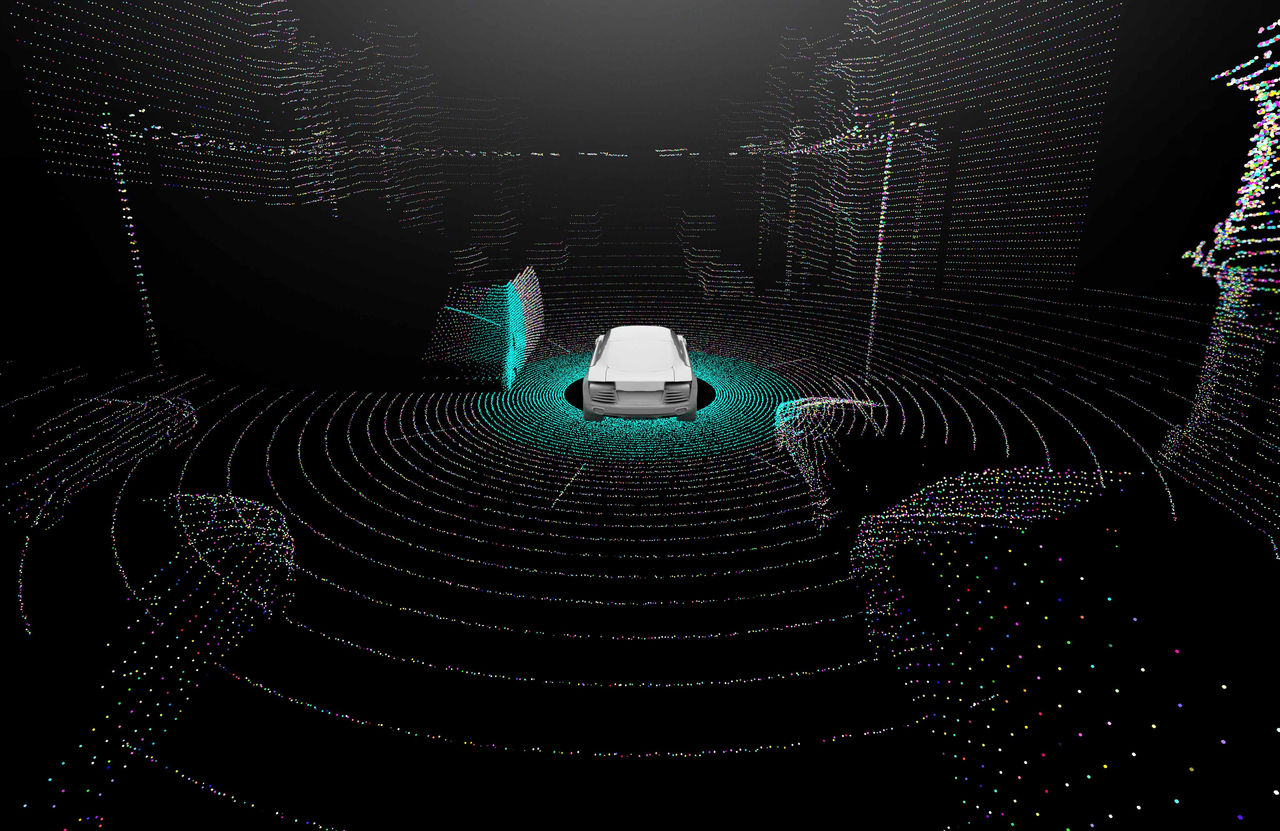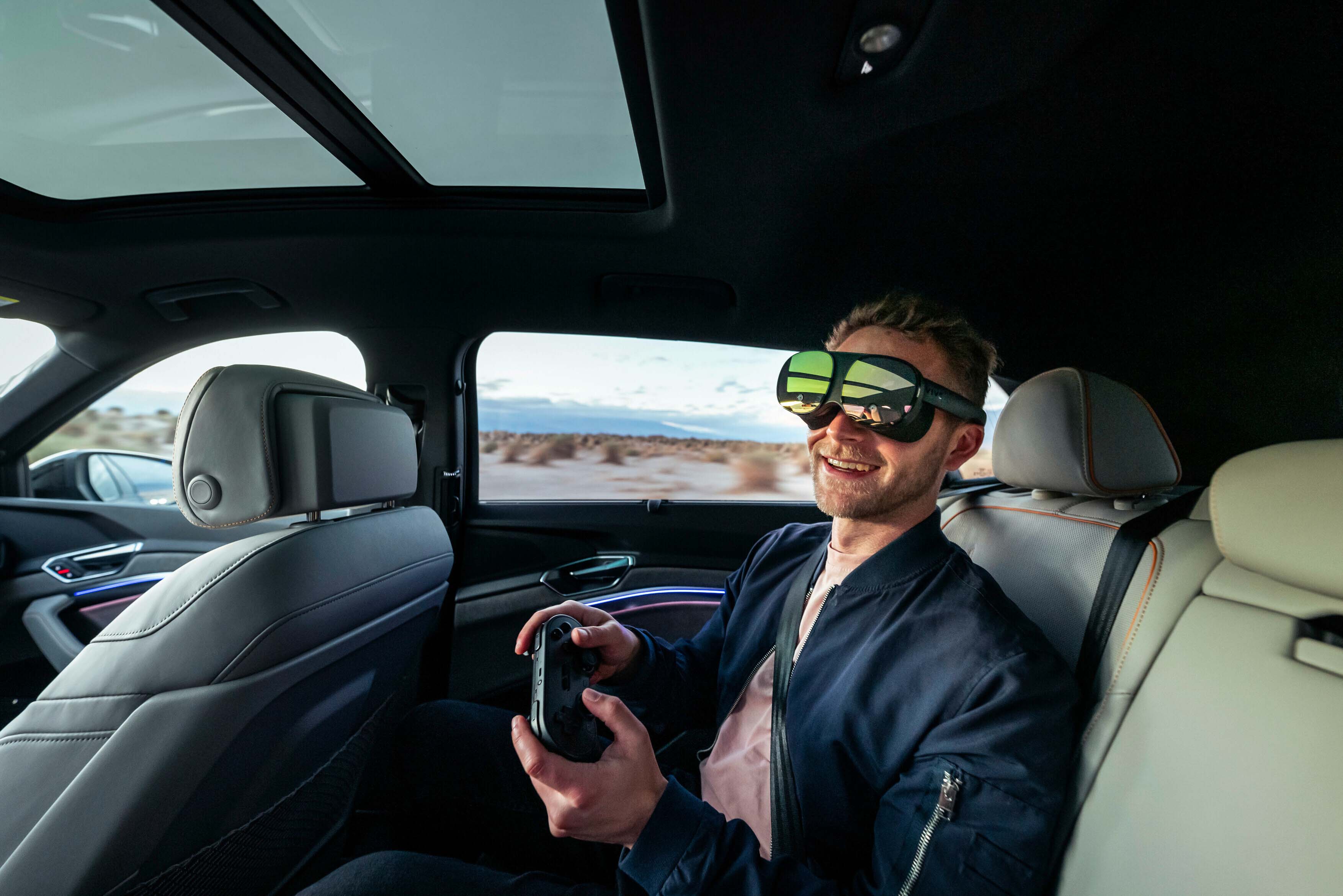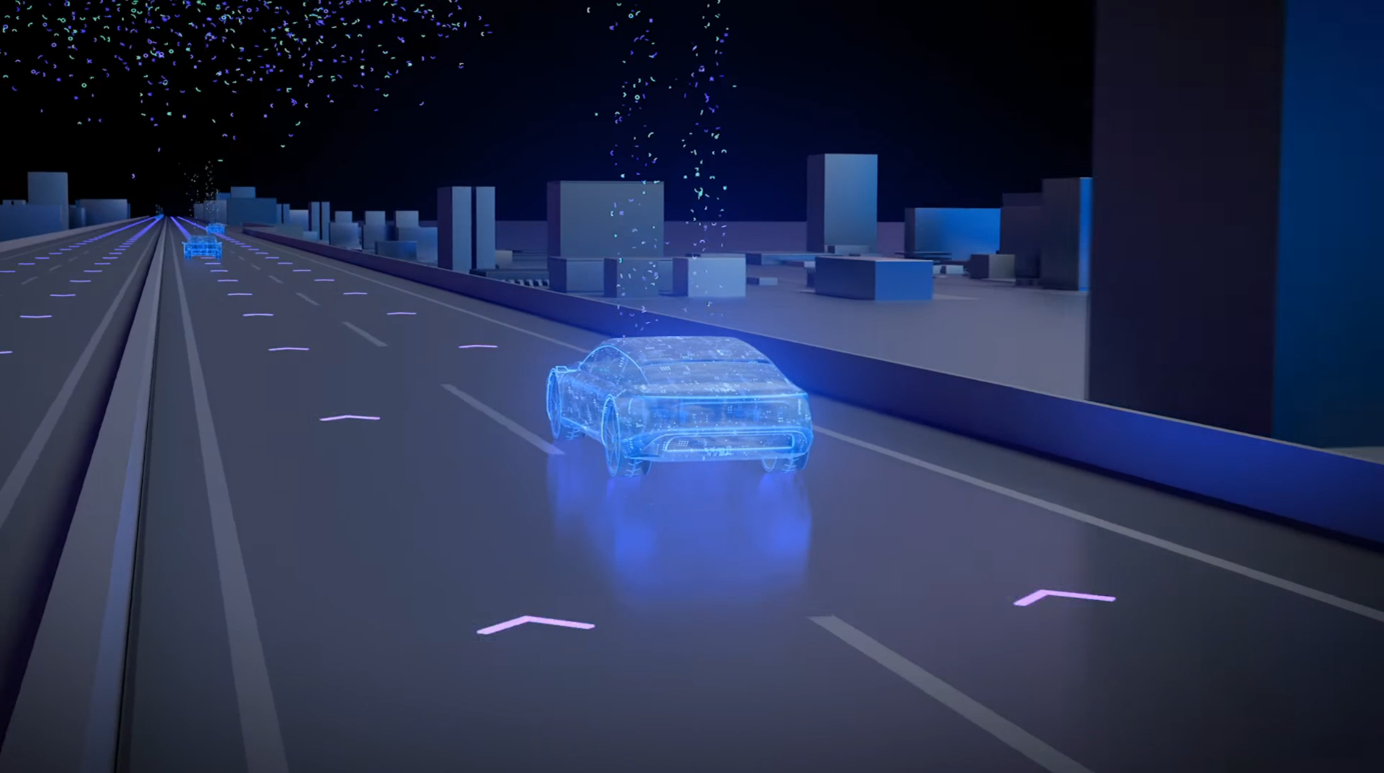Using lasers to enhance safety and accuracy
Why is lidar an important sensor for self-driving cars?

Automated vehicles rely on vast data sets to navigate through traffic. Data is gathered from sensors such as cameras and radar mounted at various positions on the vehicle. It's then fused to create an environment model. This model offers a comprehensive view of the vehicle’s surroundings.
However, while useful, information from cameras and radar alone won’t be sufficient to perceive the world around the car. Lidar will play a crucial role in providing additional data, helping us to fill in the gaps and achieve higher levels of automated driving.

What is lidar?
‘Lidar’ is an acronym for ‘light detection and ranging’. It’s a method that uses a laser to measure distances, similar to the way in which radar uses radio waves and sonar uses sound.
Lidar is now being developed for self-driving cars in order to capture very detailed and wide-ranging information of a vehicle’s surroundings. The technology is already available for driver assistance systems, such as adaptive cruise control. But beyond the automotive industry, lidar has been around for decades. It was even used by NASA in its Apollo 15 mission in 1971 to map the surface of the moon using a variety of on-board sensors.
In automotive applications, lidar sensors are mounted at the front or on top of the vehicle and emit lasers that have a wavelength certified safe for the human eye. They hit and bounce off surrounding objects, such as other cars, pedestrians and buildings, before returning to the sensor. Using the time it took for the laser to return, the sensor then calculates the distance travelled between the car and each of the individual objects.

Benefits over cameras and radar
The three main types of sensors used for automated driving are camera, radar and lidar. Lidar holds a number of benefits over the other two.
While high-resolution cameras can provide a very good level of detail, their output is still only a 2D image. AI-based software is required to turn these 2D images into a 3D representation of the environment that can be understood and used by the vehicle for automated driving functions. Cameras alone don’t offer reliable depth and shape recognition and can only infer the location of an object, not measure the distance. Lidar, on the other hand, offers computer-friendly data in the form of exact measurements – and in 3D images like point clouds.
In addition, cameras are more susceptible to environmental conditions. Rain, fog and snow can obscure their vision, while glare from the sun can blind them. They also struggle at night. Cutting-edge lidar doesn’t have the same limitations.
Radar is a reliable sensor too, but has a lower accuracy when compared to lidar. The resolution it provides is also too low to identify finer details such as pedestrians’ arms and legs.
To be able to achieve highly automated driving (Level 3 and beyond) functions for self-driving cars, the vehicle must be able to detect the depth, velocity and acceleration of surrounding objects. Lidar is able to provide all three of these factors.
Greater safety through sensor diversity
When working in the area of highly automated driving, it’s crucial to rely on sensor diversity to improve the reliability and accuracy of environment perception. Each sensor technology has its own strengths and weaknesses, which can be balanced and mitigated by using multiple different principles. In this sense, lidar should not be considered a superfluous component.
While an additional component will naturally increase the cost and complexity of the system, this should be weighed up with the significant benefits that it offers. By enabling highly automated driving, lidar technology not only offers a more comfortable driving experience, but also greatly contributes to a robust, reliable system that improves safety and reduces road accidents. The latest technological advancements have proven that lidar sensors can be built to be compact, reliable, high-performing and cost-effective.




